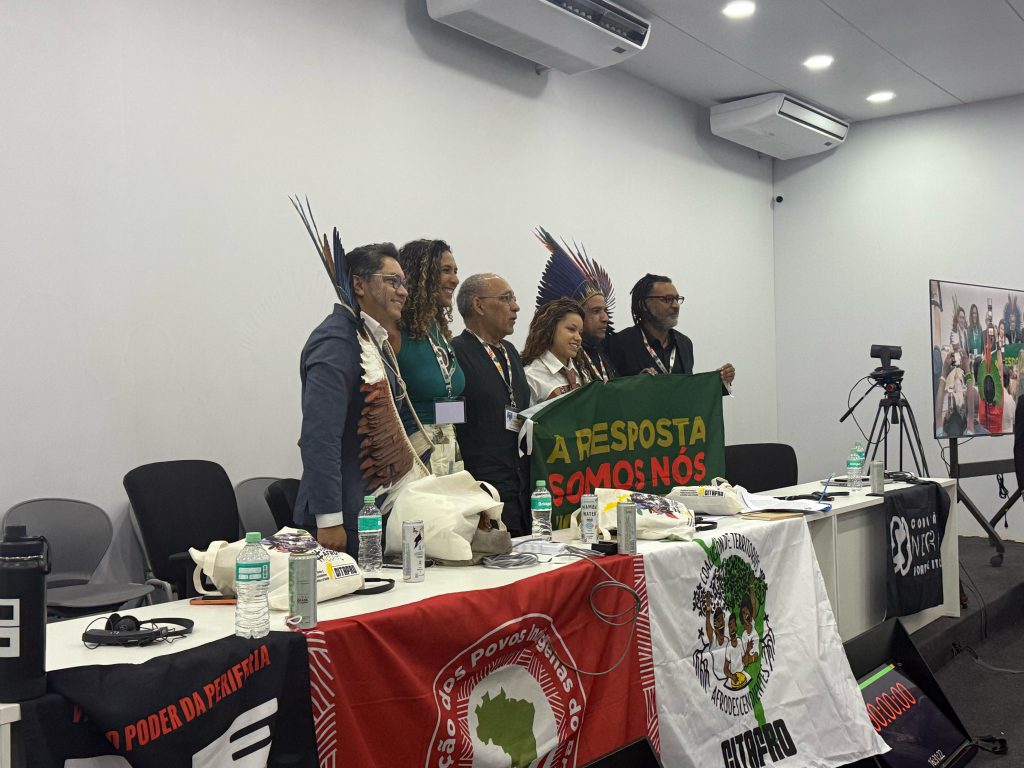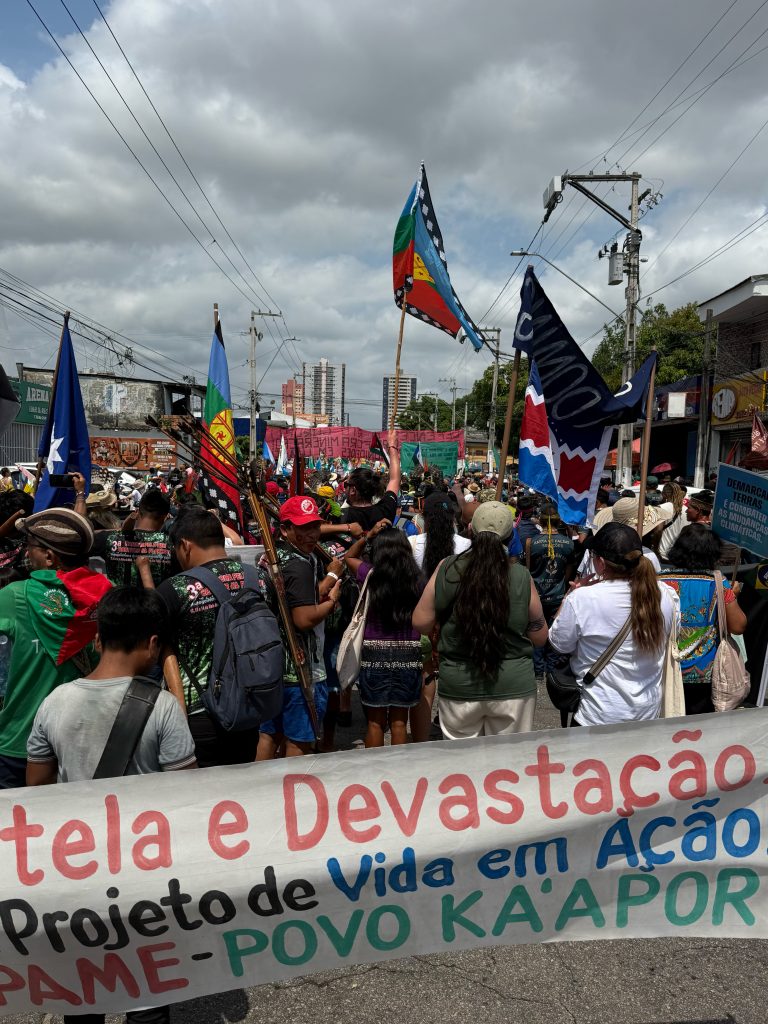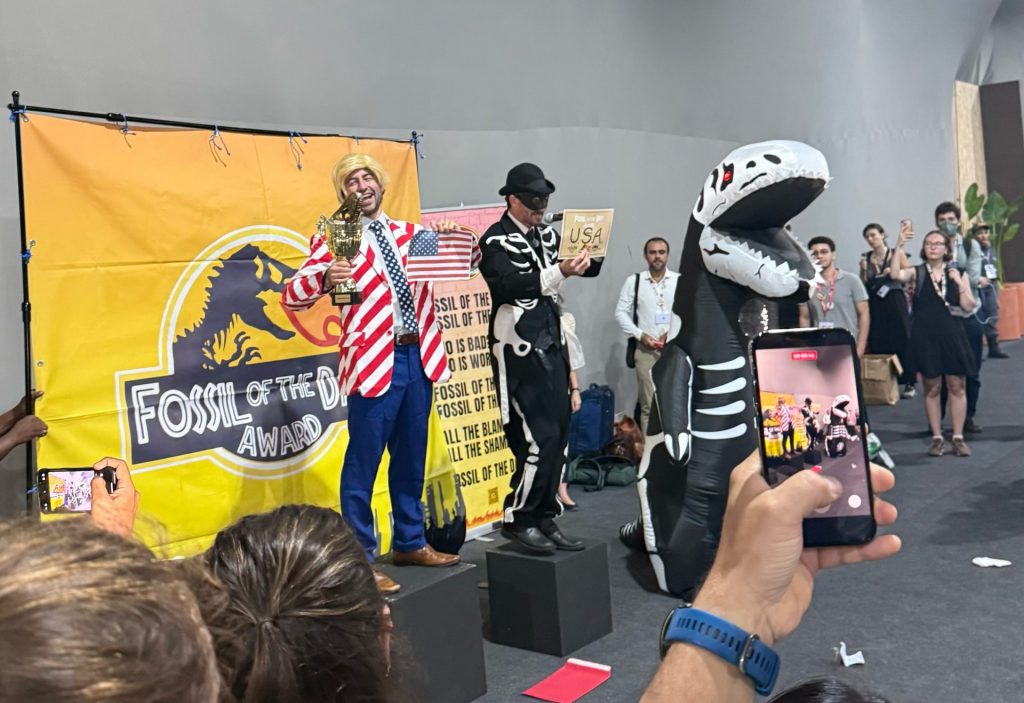A week into COP30 in Belem, Brazil, the biggest headline was a protest by Indigenous people and youth groups that was met with heavy police presence and prompted the evacuation of the entire venue. After two consecutive COPs in oil-rich Asian countries, COP30 was touted as a chance for Indigenous and Global South communities to come together in the gateway to the Amazon to make their voices heard. In some ways, this has come to fruition. A dozen side events that took place over the first week centered the voices of Indigenous peoples, primarily from the Amazon and the surrounding regions of Latin America. I had the opportunity to attend events focused on climate resilience in Indigenous communities, partnerships between Afrodescendent and Indigenous Brazilians in the fight for climate justice, and securing climate finance access for Indigenous peoples, among others. These events were lively and well-attended by diverse groups of people all intent to listen to the stories and perspectives of Indigenous peoples whose voices have so often been shut out of global conversations.

But just creating space for small groups of Indigenous peoples isn’t enough. The proliferation of protests surrounding the conference, mainly organized by Indigenous organizations, and the symbolic statement made by the Indigenous people’s caravan in trying to force their way inside the conference, suggest that the conference has been far from an inclusive and open space for Indigenous peoples. Furthermore, even though the conference may be more accessible for Indigenous Amazonians, making it truly accessible to Indigenous peoples as a whole would require easier access and financial support for those traveling from other parts of the world. Presenting the conference as accessible for Indigenous peoples as a whole erroneously suggests homogeneity in the experiences, interests, and contributions of Indigenous people from all over the world. While Indigenous communities have shared histories of oppression, their disparate circumstances and needs do not translate into a unified perspective on climate policy.

Looking inside the venue paints an even clearer picture of the ways in which the conference has failed to create space for Indigenous voices. While the few Indigenous organizations able to access the conference host side events to an audience of observers, the party members with the power to shape the direction of multilateral climate policy sit down a long hallway, negotiating the content and implementation of UNFCCC texts. The meeting rooms where negotiations occur are notably different from the side events in both atmosphere and demographic makeup. As you might imagine, the negotiations tend to be dry and relatively uninspired, filled by country delegates dressed in the same button down shirts and slacks. These sessions also tend to be much more exclusive. Although Indigenous people may be in the room as observers, they are not at the decision-making table. And while Indigenous groups are sometimes allowed to voice their opinions, those opinions are typically “noted” but not integrated into the discussions among the parties.
The restricted power of Indigenous communities in the negotiation process was especially apparent during Article 6 negotiations, including during a session reviewing guidance on Article 6.4 of the Paris Agreement, which creates the framework for a centralized carbon market. Parties had been discussing for days the guidance they wished to provide on a report published by the UNFCCC secretariat on the success of the program since its operationalization at COP29. After debating for multiple sessions about the contents of the guidance, parties were set to discuss a draft text that called for increased flexibility in implementation and reporting. Concerned with this development and frustrated with the direction of the negotiations, the Indigenous Peoples Organization (IPO) and other civil society organizations appealed to the facilitators to be given an opportunity to speak. Only after approaching one of the co-facilitators in the hall were IPO and other observer groups given the floor. IPO’s representative gave an impassioned speech about the need to ensure the integrity of carbon markets by maintaining stringent oversight of the process given that even under the current guidelines “carbon markets are treating our territories as commodities without consent.” Despite other constituency groups echoing these points, as of the end of week one, no significant changes along these lines had been made to the text.
Creating a COP for Indigenous people cannot just mean holding it in a location in close proximity to an Indigenous community. It requires opening up the venue and the negotiating process to Indigenous peoples from across the globe, and providing these communities with the same respect and decision-making power as every other major stakeholder in the UNFCCC process.
